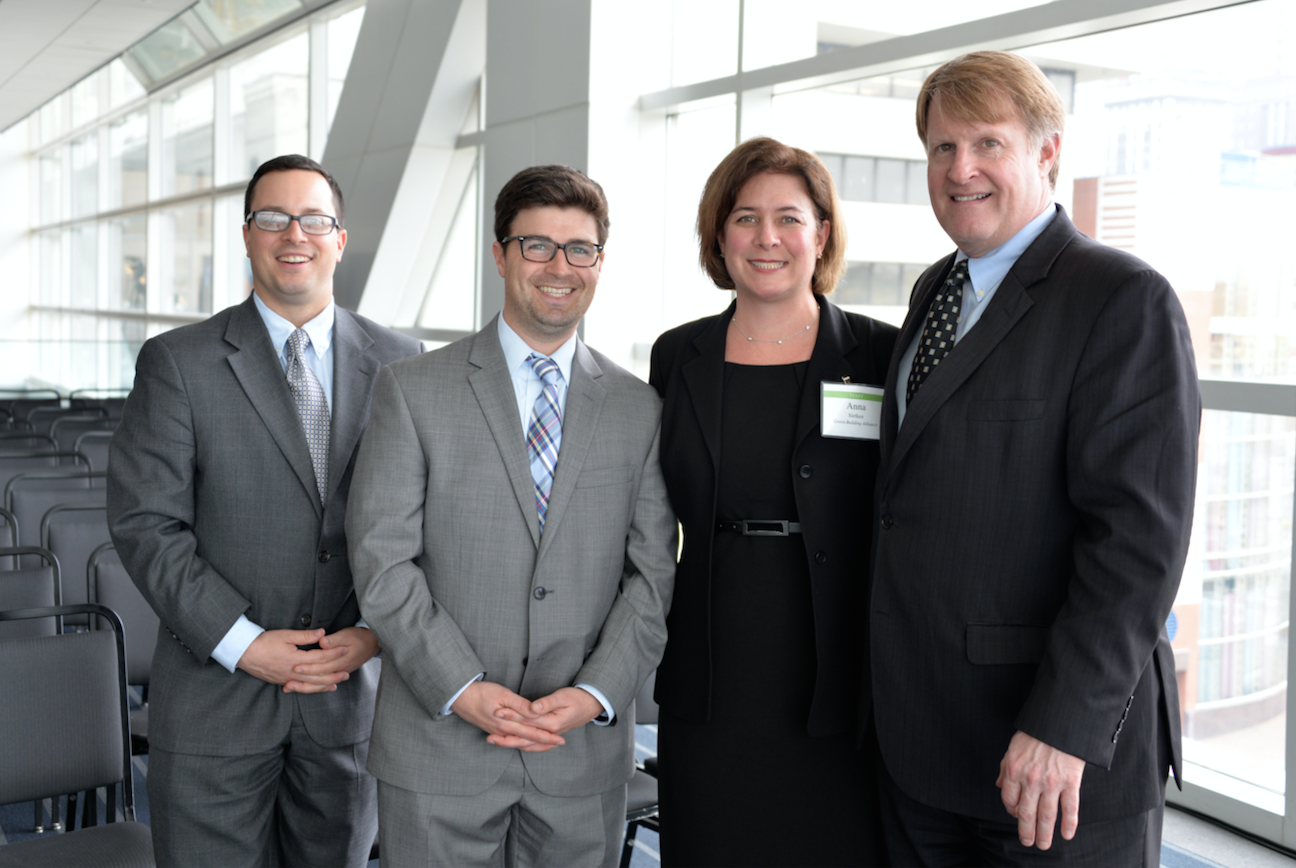Code Green Solutions


Photo courtesy of Green Building Alliance
When I hear the news about federal, state and local governments at an impasse, it makes me all the more excited to be working on a city-focused, economy-boosting program that is pushing forward on sustainability goals while impacting the triple bottom line. The Pittsburgh 2030 District is a strategic initiative of Green Building Alliance in Pittsburgh, PA with boundaries in Downtown Pittsburgh and the nearby commercial district of Oakland. Last week, we announced in our 2015 annual report to local leaders and the business community that the District has met and exceeded all three reduction targets of 10% below baselines – for energy, water, and transportation emissions. In fact, the Pittsburgh 2030 District has reduced its total energy and water consumption by 12.5% and 10.3%, respectively, surpassing its 2015 goal of 10%. It also reported a reduction in transportation emissions by 24.2%, exceeding its 2020 goal of a 20% reduction – five years early. The District, which collects and aggregates actual performance data from committed buildings within its two District boundaries, is the largest of 12 internationally recognized 2030 District cities and is the first to report that the incremental goals have been achieved and surpassed.
The Pittsburgh 2030 District is spearheading our region’s efforts to drive real estate investment in a more sustainable way. The diligent work of 85 property partners practicing exceptional commitment via 438 buildings – more than 68.2 million square feet – is paying off. 2015 was a milestone year for Pittsburgh. We’re delighted that building owners and facility managers will see the financial benefits of exceeding our incremental goals as a collective. The Pittsburgh 2030 District leads the nation in building commitments and their associated energy and water savings, and we will continue to develop new initiatives to advance measurement and success. Imagine what would happen if every city started a 2030 District?
The Pittsburgh 2030 District’s commitments currently include 438 commercial buildings for a total of 68.2 million square feet. In 2015, the Pittsburgh 2030 District added 6.7 million square feet (including the early-2015 expansion into The Bluff), 57 buildings, and 17 partners. Downtown Pittsburgh and Oakland are the second and third largest commercial business districts in the Commonwealth of Pennsylvania.
“I’m proud of the work done by the many participants in the Pittsburgh 2030 District,” said Allegheny County Executive Rich Fitzgerald. “This initiative has inspired significant, sustainable advancement in the region. These building owners and facility managers, both at the County and throughout Downtown and Oakland, are having a measurable impact on our region’s economic vitality. Their collaborative efforts place Pittsburgh as the leader among all cities internationally who are participating in the 2030 Districts Network and we, as a community, are better off for their endeavors and strong commitment.”
“We continue to see remarkable progress from the hundreds of participants in the Pittsburgh 2030 District,” said City of Pittsburgh Mayor William Peduto. “The efforts of committed building owners and facility managers within Downtown and Oakland are exemplary – and they represent the best work from the brightest entities from within our City.”
PITTSBURGH 2030 DISTRICT ACHIEVEMENTS through year end 2015
ENERGY: 12.5% reduction, exceeding 2015 incremental goal of 10% below baseline.
WATER: 10.3% reduction, exceeding 2015 incremental goal of 10% below baseline.
TRANSPORTATION EMISSIONS: 24.2% reduction, exceeding 2020 incremental goal of 20% below baseline.
INDOOR AIR QUALITY: Pilot complete.
The Pittsburgh 2030 District Progress Report for 2015 outlines significant, measured results for the initiative, and outlines other noteworthy achievements, including a new transportation baseline, Oakland-specific water consumption reporting for the first time, and information about the recently completed indoor air quality pilot. The Pittsburgh 2030 District Progress Report Reception, held at the double-LEED certified David L. Lawrence Convention Center on April 28, 2016, featured remarks from Allegheny County Executive Rich Fitzgerald, City of Pittsburgh Chief Resiliency Officer Grant Ervin, and Pittsburgh 2030 District Director Anna J. Siefken. The marquee event was attended by more than 200 industry stakeholders, elected officials, representatives of the city and region, building owners, facility managers and many other guests.
Download the 2015 Pittsburgh 2030 District Progress Report
About the Pittsburgh 2030 District:
Pittsburgh 2030 District is an internationally recognized, locally driven, voluntary initiative that encourages business owners and facility managers in Downtown Pittsburgh and Oakland to work collaboratively toward aggressive 50% reductions in energy use, water consumption, and transportation emissions (below baseline) by the year 2030 – to save money and to increase each building’s operational efficiency. Participants, which include Property Partners, Community Stakeholders, and Resource Organizations, are committed to the measured building performance goals of the 2030 Challenge. Part of an international 2030 Districts Network, Pittsburgh 2030 District represents 438 buildings and more than 68.2 million square feet of commercial real estate, and is a public-private partnership convened by Green Building Alliance.
About Green Building Alliance
Green Building Alliance (GBA) is a nonprofit organization that inspires the creation of healthy, high performing places for everyone through leadership that connects knowledge, transformative ideas, and collaborative action. Headquartered in Pittsburgh, GBA was founded in 1993, is one of the oldest regional green building organizations, and is a chapter of the U.S. Green Building Council (USGBC). GBA advances its mission through a variety of programs and strategies, including the Pittsburgh 2030 District, a Green & Healthy Schools Academy, and education, technical assistance, and policy support to the 26 counties of Western Pennsylvania and beyond.